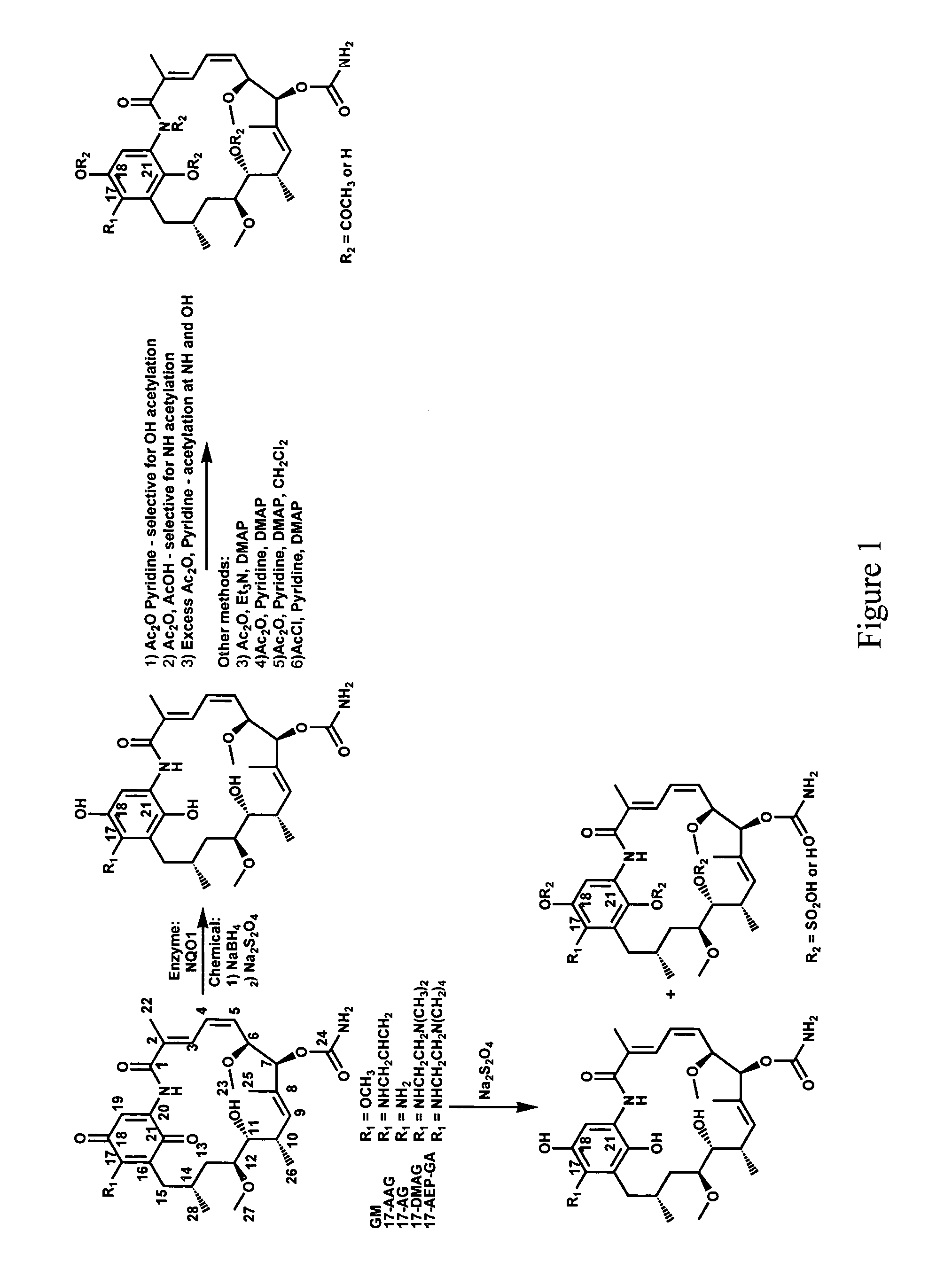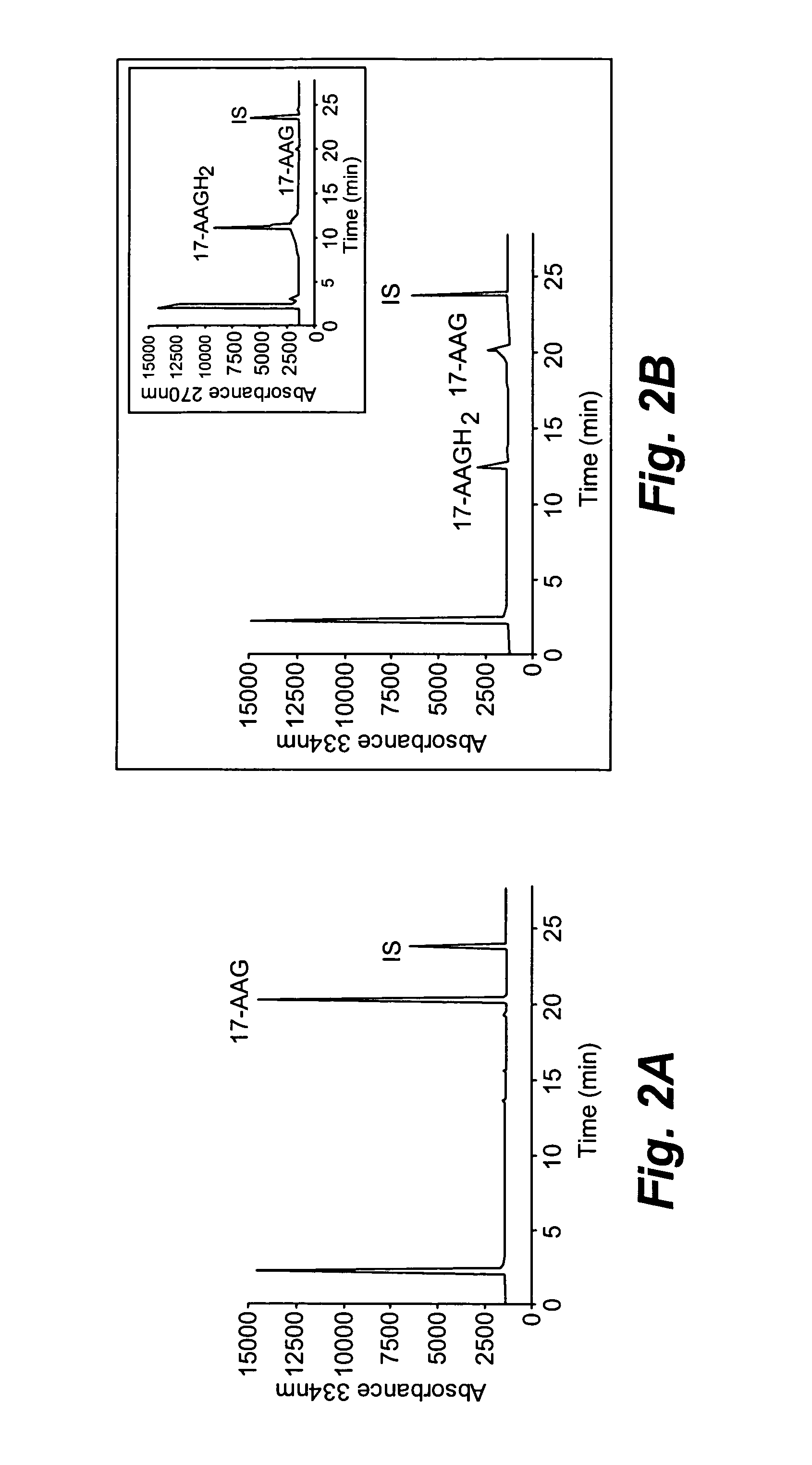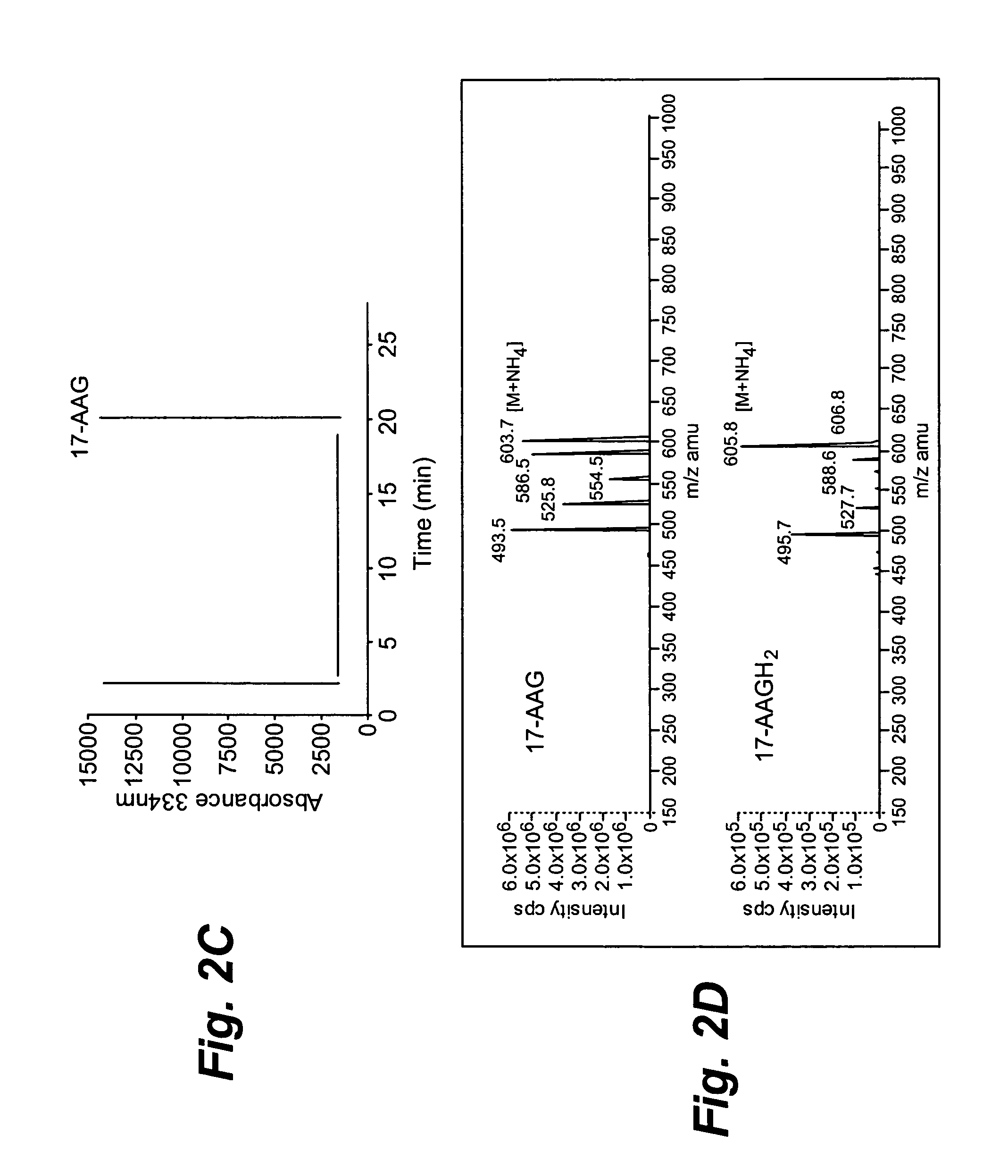Hsp90 inhibitors, methods of making and uses therefor
a technology of hsp90 and inhibitors, which is applied in the field of geldanamycin derivatives as anticancer compounds, can solve problems such as withdrawal from phase i clinical trials
- Summary
- Abstract
- Description
- Claims
- Application Information
AI Technical Summary
Benefits of technology
Problems solved by technology
Method used
Image
Examples
example 1
Reduction of 17-AAG by NQO1
[0119]In vitro studies with purified recombinant human NQO1 clearly demonstrated that reduction of 17-AAG by NQO1 in combination with NADH or NADPH generated 17-AAGH2.
[0120]The metabolism of 17-AAG by NQO1 was analyzed by high performance liquid chromatography (HPLC) on a Luna C18 reverse-phase column (5 μm, 4.6×250 mm, Phenomenex, Torrance, Calif.) at room temperature. HPLC conditions: Buffer A, 50 mM ammonium acetate, pH 4 containing 10 μM D(−) penicillamine; buffer B, acetonitrile (100%). Both buffers were continuously bubbled with N2. Gradient, 20% B to 85% B over 20 min, then 85% for 4 min (flow rate of 1 ml / min). The sample injection volume was 50 μl. Liquid Chromatography-Mass Spectrometry was performed using positive ion electrospray ionization (ESI) and the mass spectra were obtained with a PE Sciex API-3000 triple quadrupole mass spectrometer (Foster City, Calif.) with a turbo ionspray source interfaced to a PE Sciex 200 HPLC system. Samples were...
example 2
Formation of 17-AAGH2 Following Reduction by NQO1
[0123]Whether 17-AAGH2 could be formed in cells following reduction by NQO1 was investigated using isogenic human breast cancer cell lines. The human breast cancer cell line MDA468 and the NQO1 stably transfected cell line MDA468 / NQ16 (Clin. Cancer Res. 2004; 10:3147-55) were grown in RPMI-1640 containing 10% (v / v) fetal bovine serum and 1% (v / v) penicillin, streptomycin and glutamine. Sonicates were prepared from MDA468 and MDA468 / NQ16 cell lines by probe-sonication in ice-cold 25 mM Tris-HCl, pH 7.4 containing 250 mM sucrose and 5 μM flavin adenine dinucleotide. Protein concentrations were determined by the method of Lowry. These cell lines have been used previously to examine the role of NQO1 in anti-tumor quinone metabolism. The parental MDA468 cell lines is NQO1 null (1,800 nmoles DCPIP / min / mg). Initial experiments were performed using cell sonicates prepared from MDA468 and MDA468 / NQ16 cells. HPLC analysis of these reactions was...
example 3
Growth Inhibition Induced by 17-AAG
[0126]The role of NQO 1 in growth inhibition induced by 17-AAG was measured in MDA468 and MDA468 / NQ16 cells using the MTT assay. Cells were seeded at 2×103 cells per well (96 well plate) in complete medium overnight. The next morning the cells were pretreated with 100 nM ES936 or an equal amount of DMSO for 30 min then exposed to 17-AAG for 4 hr, after which, cells were rinsed free of drug and incubated in fresh medium for an additional 72 hr and growth inhibition was determined using the MTT assay (FIG. 5). Results from these experiments demonstrate that MDA468 / NQ16 cells have increased sensitivity to 17-AAG (IC500.86±0.16 μM) compared to parental MDA468 cells (IC5010.05±1.07 μM). The sensitivity to 17-AAG can be abrogated by pretreatment with ES936 (IC507.67±1.36 μM).
[0127]The role of NQO1 in 17-AAG-induced Hsp90 inhibition in MDA468 and MDA468 / NQ16 cells was also examined. To measure Hsp90 inhibition in these cells we analyzed Hsp70 induction an...
PUM
| Property | Measurement | Unit |
|---|---|---|
| pH | aaaaa | aaaaa |
| detection wavelength | aaaaa | aaaaa |
| total volume | aaaaa | aaaaa |
Abstract
Description
Claims
Application Information
 Login to View More
Login to View More - R&D
- Intellectual Property
- Life Sciences
- Materials
- Tech Scout
- Unparalleled Data Quality
- Higher Quality Content
- 60% Fewer Hallucinations
Browse by: Latest US Patents, China's latest patents, Technical Efficacy Thesaurus, Application Domain, Technology Topic, Popular Technical Reports.
© 2025 PatSnap. All rights reserved.Legal|Privacy policy|Modern Slavery Act Transparency Statement|Sitemap|About US| Contact US: help@patsnap.com



